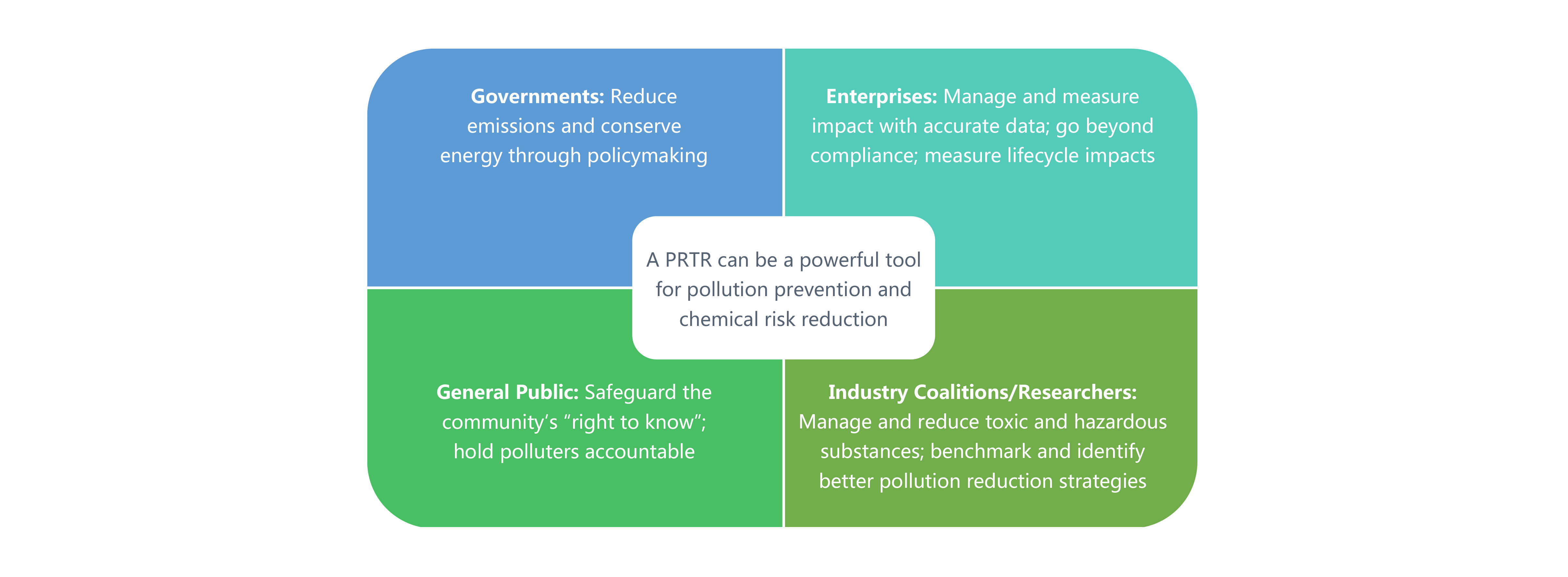What is PRTR?
Pollutant release and transfer register (PRTR) systems are environmental databases or inventories of potentially hazardous chemical substances and/or other pollutants released into the air, water and soil and transferred off-site for treatment and disposal. Since the establishment of the U.S. Toxics Release Inventory (TRI) system in 1986, PRTR systems have been launched in over 50 countries worldwide.
IPE has long advocated for the establishment of a nationwide PRTR system suitable for China. Starting with the first Pollution Information Transparency Index (PITI) report published in 2009, IPE has studied and analyzed international experiences in implementing PRTR systems in order to introduce an effective and efficient system for China.
In 2013, IPE developed a "Proposed Pollutant Inventory for a Pollutant Release and Transfer Register (PRTR) in China". The list is based on China’s National Register of Hazardous Wastes, as well as the hazardous substances from the U.S. TRI and E.U. PRTR lists that are most relevant to industries in China.
IPE launched its own platform for the voluntary disclosure of PRTR data in August 2013 to encourage high environmental impact manufacturers in China to disclose their emissions data, including energy use and carbon emissions, water use and wastewater pollutants, air emissions quantity and pollutants, and the transfer and release of hazardous materials.
For more information, please see the report: Establishing a PRTR Disclosure System in China.
Significance of PRTR for Different Stakeholders
PRTR encourages the benchmarking and monitoring of enterprise performance and creates a platform for continuous improvement. It can facilitate self-improvement by willing enterprises and strengthen the ability of government regulators, local communities, and other stakeholders to play a greater role in pollution reduction.

Leading brands incorporate PRTR into their supply chain management mechanisms